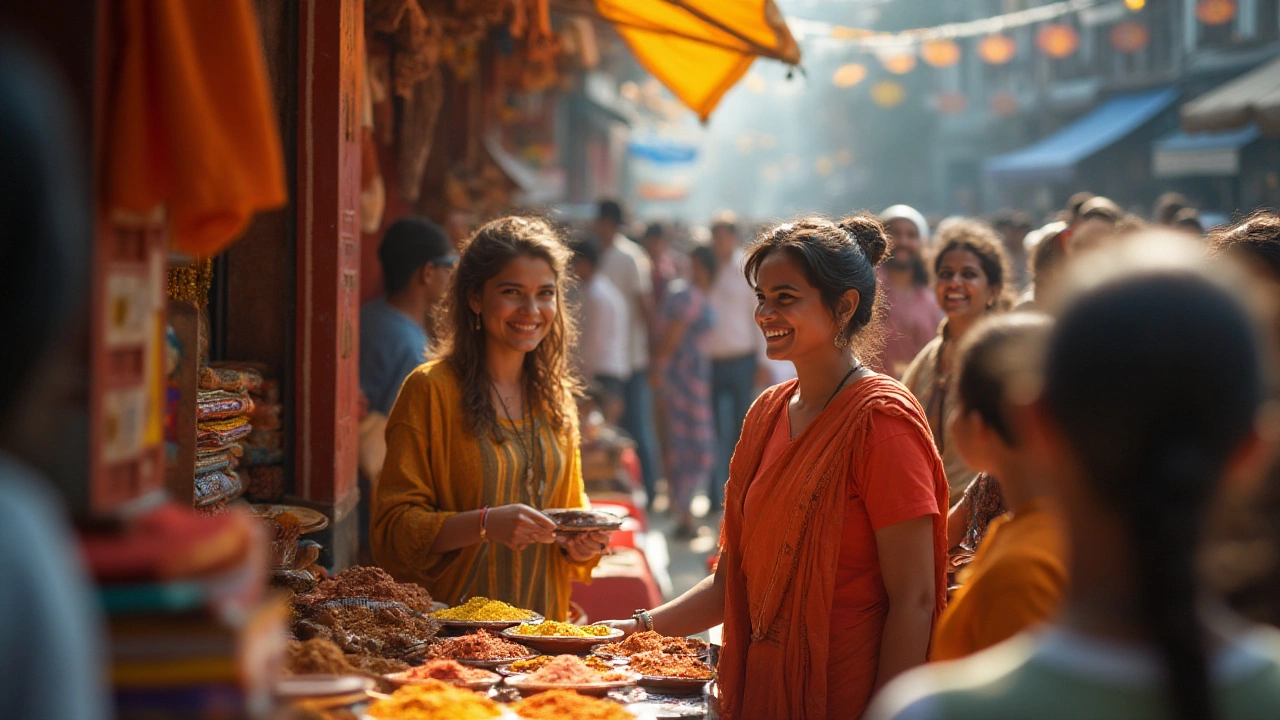American Tourists in India: What They Need to Know Before They Go
When American tourists, U.S. citizens traveling to India for leisure, culture, or adventure. Also known as U.S. travelers to India, they often seek a mix of ancient temples, vibrant street life, and unforgettable food. come to India, they’re not just sightseeing—they’re stepping into a country that operates on its own rhythm. Many expect chaos and leave amazed by the order hidden within it. What surprises them most isn’t the Taj Mahal or the beaches of Goa—it’s how welcoming and curious locals are, even when language barriers exist.
One of the biggest concerns for American tourists, U.S. citizens traveling to India for leisure, culture, or adventure. Also known as U.S. travelers to India, they often seek a mix of ancient temples, vibrant street life, and unforgettable food. is food safety. They’ve heard stories of stomach issues from street food, but the truth is simpler: eat hot, freshly cooked meals from busy stalls. Busy means fresh. No lines? Walk away. North Indian dishes like butter chicken, dal tadka, and roti are safe and delicious if served steaming. Avoid raw salads, unpeeled fruit, and ice in drinks unless you’re sure the water is filtered. This isn’t about fear—it’s about smart choices.
Another key factor is cultural tourism, travel focused on experiencing local traditions, festivals, and daily life rather than just landmarks. Also known as immersive travel, it’s what draws many American tourists back year after year. India isn’t a museum—it’s alive. From the noise of Kumbh Mela to the quiet devotion at a temple in Tamil Nadu, the culture isn’t staged for visitors. It’s real. And that’s what makes it powerful. Americans who plan around festivals, dress modestly near religious sites, and ask before taking photos often get invited into homes, offered chai, and leave with stories no guidebook can give.
Safety is another big question. Cities like Delhi and Mumbai have their challenges, but so do New York and Los Angeles. The difference? In India, you’re often surrounded by people who notice when something feels off. Women traveling alone should avoid isolated areas at night, but many report feeling safer than expected, especially with a trusted taxi service. Punjab, for example, is known for its hospitality and low crime rates—even more so than many U.S. towns. The key is common sense: don’t flash cash, keep copies of your passport, and always use registered taxis or ride apps.
And then there’s the cost. India still offers incredible value. A luxury hotel room can cost less than a decent Airbnb in Chicago. A full day of guided temple tours with a driver? Under $50. Even high-end dining in Goa won’t break the bank. That’s why American tourists keep coming back—not just for the sights, but because they feel like they’re getting more for their money than anywhere else.
What ties all this together? American tourists don’t just visit India—they experience it. They eat spicy food they thought they’d hate. They ride rickshaws through crowded markets and laugh when they get lost. They stand in silence at the Golden Temple and leave with a different perspective on spirituality. This isn’t a checklist trip. It’s a transformation.
Below, you’ll find real advice from travelers who’ve been there: what to eat, where to go, how to stay safe, and which places surprise even the most seasoned visitors. No fluff. No hype. Just what works.
Is it Safe for Americans Traveling to North India?
Explore the safety of traveling to North India as an American tourist. Discover essential tips and advice for enhancing your travel experience, while understanding cultural norms and regional expectations. Understand the healthcare and hygiene factors, while preparing for a safe and enjoyable journey filled with the astonishing beauty of North India.
Read more